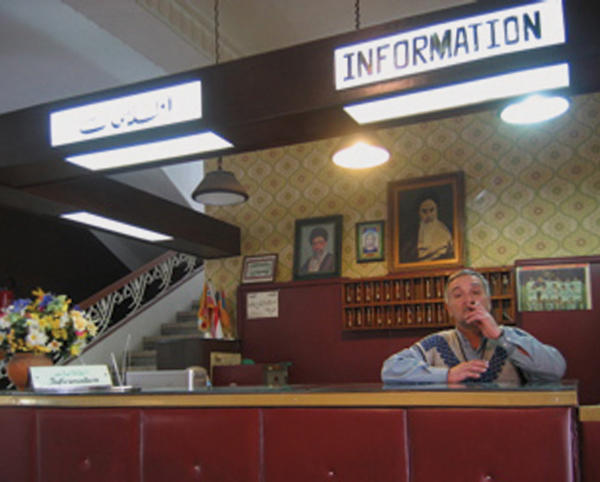
Just south of Tehran’s Ferdosi Square and deep in the city’s traditional Armenian quarter is Hotel Naderi, Iran’s very first hotel, or so its proprietors claim. The brainchild of an Armenian immigrant (arrived via Baku) who went by the name Khachik, Hotel Naderi opened at the turn of the twentieth century to cater to the itinerant Orientalist, the occasional Iranian businessman, and the somewhat more occasional philandering husband. Today, Naderi and its adjacent café, restaurant, and patisserie live on, a tribute to classic cool and a stubborn rebuke to the newer-is-better tendencies of the capital as we know it today.
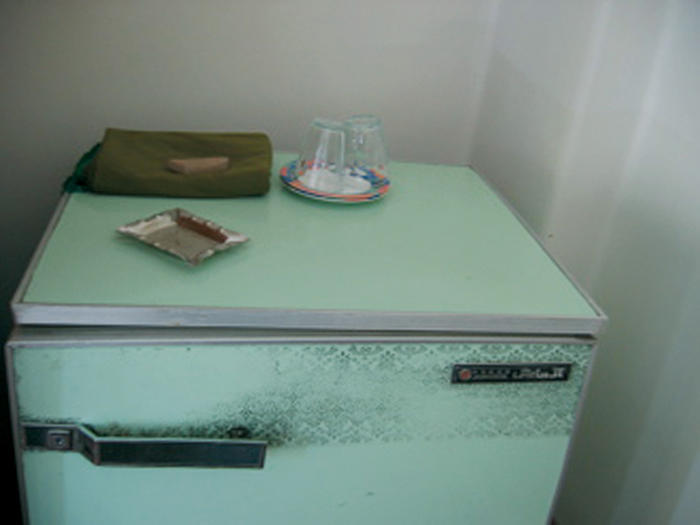
Step into Naderi’s lobby and little seems to have changed. The original lime green wallpaper is still there, as are a set of delicate French chairs, along with an antique wooden telephone. Where there was once a fully stocked bar — before revolution came — is a sitting area and a view to the hotel’s pleasant back garden. Behind the front counter sits Mr. Badaghi, welcoming guests and manning the clunky and ancient German switchboard that connects him to the hotel’s twenty-four rooms. Mr. Badaghi has been working at Naderi since the age of 20 — well before the revolution, he announces, though he will not reveal much more.
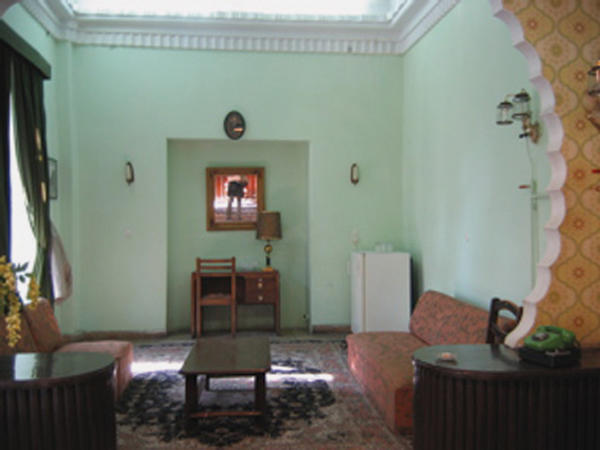
Despite the impeccable conservation of the lobby, much of the hotel and the surrounding neighborhood has changed irrevocably. Gone are most of the Armenians, the businessmen who lived and played well during the Shah’s reign, the American tourists and the alcohol hawkers next door, as well as the cosmopolitan air that made the place an emblem of a Tehran in which East and West seamlessly mingled.
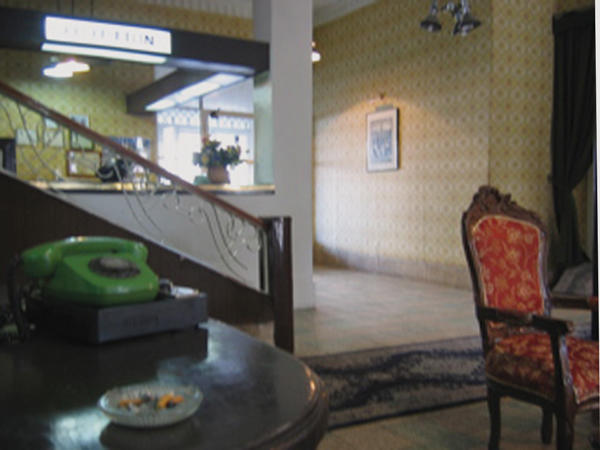
Before the revolution, the hotel’s courtyard hosted a resident band from Italy, which played jazz numbers every night. Revolutionary thinkers, artists, and intellectuals held court at Naderi, each with a corner to call his own — Jalal Al-e Ahmad, Mohammad Ali Jamalzadeh, and Sadeq Hedayat among them.
Today, a room at Hotel Naderi costs $15 for a single bed and $30 for a double — a good deal in comparison to the inflated prices at uptown hotels. No breakfast is included, though the adjoining restaurant is open all day and through the evening. Rooms are clean and simple, and if you’re lucky you may find an Art Deco phone or Frigidaire. Most of Naderi’s guests these days are young, and certainly not fussy — adventurous Europeans, along with the rare Japanese or American. Gone is Mrs. Kakoubian, a slightly off-kilter, perfectly coiffed Armenian who made her home in the hotel for fifteen years before the revolution, or the retired general who also wandered the hotel’s halls as one of its permanent guests.
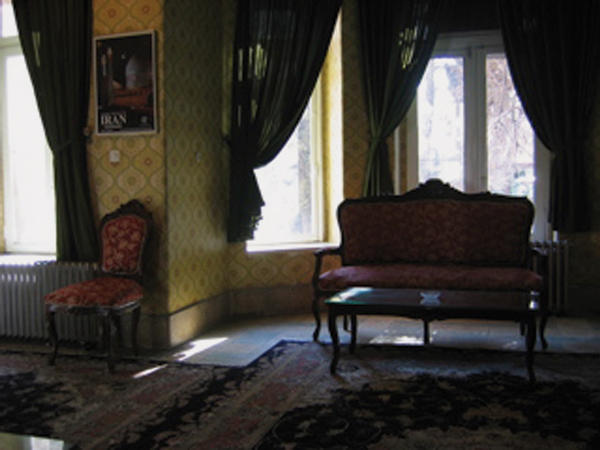
Some things are more resistant to change. At Café Naderi, the Turkish coffee continues to run delightfully thick and the crème glace is delicious. Brooding young side-burned boys toting works by the deceased Iranian literary goddess cum cult figure Forough Farokhzad cavort with cute girls sporting Tajik headscarves (all the rage) and contemporary art books in translation. Tweed-clad, aging artists, poets and self — appointed authorities on a variety of topics are staples, and émigrés and exiles occasionally pass through Naderi’s smoke-filled boundaries — back in Iran for the first time since the revolution and usually pleased that at least one corner of the city remains somewhat familiar. Café Naderi’s waitstaff seems to have hardly changed in years — uniformly geriatric but looking sharp all the same in their wrinkly, mauve serving uniforms. The original menu also remains; while the beef stroganoff may be tough and the veal suspiciously slimy, the chicken and meat kabob rarely go wrong.

In the end, Naderi is a portal to the past, a haunt well suited to the perpetually nostalgic, an ode to an era long, long gone.
572 Jomhuri Avenue
Between Ferdosi and 30 Tir Street
Tehran, Iran
tel +98 21 66708610